Dhampus Sarangkot Trek – 8 Days: Mountains, Villages, and Good Vibes
Alright, let’s be real for a second—if you’re itching for some proper Himalayan magic but can’t be bothered with the whole “altitude sickness and yak butter tea for weeks” vibe, this trek is your golden ticket. Eight days. That’s it. You’ll ramble through the Annapurna foothills, getting those jaw-dropping mountain views—think Machhapuchhre (yeah, the Fishtail one), Annapurna South, Hiunchuli, and good ol’ Dhaulagiri—without turning into a glorified mountain goat.
You want forests? Bam—rhododendrons everywhere, like Mother Nature’s confetti. Villages? The Gurung folks are out here living their best life, and you’ll get a taste of it. Sunrises? Oh man, Sarangkot’s got the kind of golden morning light that’ll make your Instagram followers weep.
And honestly, you don’t have to be some sort of trekking superhero. If you can handle a day hike with the occasional “why did I pack so much trail mix” moment, you’re good. Perfect for families, newbies, or anyone who wants a week of real-deal Nepali culture and scenery, minus the drama. It’s basically a highlight reel of everything awesome near Pokhara—nature, culture, and more photo ops than your phone storage can handle.
Alright, here’s the deal with the Dhampus Sarangkot Trek: it’s one of those trips where you end up wondering why you didn’t do it sooner. Eight days wandering around the Annapurna foothills—yeah, you’re not exactly summiting Everest, but who cares? The views out here are pure magic.
You kick things off near Pokhara, and honestly, the vibe is just chill. Think winding through rice terraces, dodging cows, and getting smacked in the face by rhododendron branches (in a good way, if that’s a thing). The trails? Nothing too wild—mostly between 1,000 and 1,600 meters, so you’re breathing easy. It’s the perfect gig if you want Himalayan grandeur without, you know, gasping for air every five minutes.
And the scenery—dude, it’s ridiculous. Annapurna South, Hiunchuli, Machhapuchhre (that’s Fishtail for anyone who can’t pronounce Nepali), and Dhaulagiri all just hanging out, making your Instagram look like a Nat Geo special. You roll through these Gurung villages like Dhampus, where the locals will probably out-hike you without breaking a sweat, and then you finally crawl up to Sarangkot. That’s the spot for sunrise—everybody and their grandma shows up for that, and for good reason. The mountains light up like someone cranked the saturation filter way too high.
What’s cool is you get this mix: peaceful forest walks, a bit of cultural flavor, and those insane mountain panoramas—all wrapped up in a week. It’s like the sampler platter of Nepal treks. Perfect for first-timers, families, or anyone who’s got more wanderlust than time off. Whether you’re chasing that golden sunrise shot or just want to clear your head on some quiet hill trails, this trek’s got that mellow, spiritual vibe that makes you wanna stay a little longer. Trust me, you’ll be grinning like a fool at the top.
Explore Himalayan Flora & Fauna on the Dhampus to Sarangkot Trail
Wow, where do I even start? The Dhampus Sarangkot Trek isn’t just “pretty views”—it’s like Mother Nature showing off and basically flexing on every step. If you’re a nature nerd or you just wanna unplug from all the noise, this trail’s got your name all over it. We’re talking neon-green rhododendron forests, meadows that look like something out of a Lisa Frank fever dream, and these wild, jungly woodlands that are just bursting with life. Honestly, it’s like walking through a National Geographic special, except you’re actually there. No David Attenborough required.
You kick things off near Phedi, and right away, you’re in the thick of these terraced fields and pine forests. Some of these paths are so mossy, you half expect a fairy to pop out and judge your hiking boots. The wildlife? Oh man—rhodies exploding everywhere in spring (that’s Nepal’s national flower, by the way, total show-off), plus oak, magnolia, and fir trees keeping things shady and dramatic.
And let’s not forget the bird situation. If you’re into birdwatching, this place is basically Disneyland. Himalayan Monals strutting their stuff (yes, those rainbow birds), plus pheasants, woodpeckers, a whole choir of songbirds—sometimes you just have to stop and listen because it’s like the forest is putting on a concert just for you. Mornings? Birds everywhere. Afternoons? Same deal, but lazier.
If you’re lucky (or maybe just quiet and a little bit patient), you might spot some furry locals—langurs doing their acrobatics, the occasional barking deer pretending it’s not afraid of you, squirrels with more attitude than sense. Butterflies are everywhere, turning the wildflowers into their own personal runway. And every now and then, someone spots a civet or a porcupine, but honestly, that’s just bonus points.
The best part? You’re not gasping for air at insane altitudes. This trek keeps things chill—literally and figuratively. You get all the Himalayan biodiversity without freezing your face off. Every little village—like Dhampus, with its Gurung charm, or Sarangkot up on its legendary hilltop—feels like a secret garden, except the secret’s out, and it’s gorgeous.
So, yeah. If you want a trek that’s not just about the Insta-worthy mountain backdrops (hello, Annapurna and Dhaulagiri), but actually gets you tangled up in nature—birds, beasts, blooms, and all—then the Dhampus Sarangkot is your jam. Perfect for bird geeks, wildlife chasers, or anyone who wants a taste of the Himalayas without the whole “survivalist” thing. Trust me, your soul—and your camera roll—will thank you.
Route Overview: From Kathmandu’s Heritage to Pokhara’s Hills & Sunrise Magic
Alright, picture this: You kick off your eight-day escapade smack in the middle of Kathmandu, that wild, noisy, absolutely fascinating capital where ancient temples just pop up around every corner. UNESCO sites? Yeah, they’re basically everywhere, setting the vibe for your whole Nepal adventure. People are friendly as heck—expect smiles, maybe even a tika on your forehead if you’re lucky. And if you’re the “let’s go big or go home” type, they’ve got that Everest Mountain Flight thing lined up for you right out the gate. No pressure.
Once you’ve gotten a taste of Kathmandu’s organized chaos, it’s onto a quick flight—think window seat, thank me later—to Pokhara. Now, Pokhara is a whole different mood: lakeside chill, mountain views that seem fake, and the starting point for trekking legends. From there, you hop in a car to Phedi (honestly, it’s more of a bumpy ride, but hey, you’re in Nepal). Then it’s boots on the ground time as you wander up terraced hills, through villages where the tea is strong and the smiles are stronger, before you crash in Dhampus. And let me tell you, the first time you see Annapurna South, Hiunchuli, and that funky Machapuchare (locals just call it Fishtail), you’ll probably forget how tired you are.
Next stop? Sarangkot. This is THE place people wake up at ungodly hours just to catch the sunrise—totally worth it, by the way. The trail cuts through forests and small settlements, and suddenly, BOOM, the Himalayas just slap you in the face with their beauty. You’ll wake up in Sarangkot, see the sun paint the Annapurnas and Dhaulagiri gold, and wonder if you’re still dreaming. No filter needed.
You’ll stumble back to Pokhara for a chill day—maybe paddle around Phewa Lake, snap some pics at Davis Falls, or just soak up the peace at World Peace Stupa. It’s like someone hit pause on your life and handed you a postcard. Finally, you hop a quick flight back to Kathmandu, probably with a camera full of mountain shots and a head full of stories you’ll be annoying your friends with for years. Seriously, this trip crams in a ridiculous amount of epic moments—mountains, temples, sunrises, you name it. If your soul isn’t at least a little bit stirred by the end, I don’t know what to tell you.
A Scenic Himalayan Escape: What Makes the Dhampus Sarangkot Trek Special
Alright, let’s get real for a sec. Sometimes you want that epic Himalayan vibe without, you know, hauling yourself up to oxygen-starved altitudes or training like you’re about to summit Everest. Enter: the Dhampus Sarangkot Trek. This little gem is tucked away in the Annapurna region, and honestly, it’s like Nepal’s greatest hits crammed into eight chill days. You get mountains, you get culture, you even get a decent bed at night. Win-win, right?
Picture this: you’re strolling past impossibly green terraces, bumping into friendly Gurung villagers, and waking up to the kinda sunrise that makes you question reality. We’re talking Annapurna and Dhaulagiri ranges lighting up like some cosmic light show—no filter needed. Kathmandu’s chaos? Pokhara’s lakeside chill? Yeah, you get both. And the best part? You don’t need to be some hardcore trekker or marathon runner. This is the trek for, well, pretty much anyone who wants a taste of the real Himalayas without all the suffering.
Honestly, if you’re looking for a quick escape or your first Himalayan adventure, this one nails it. It’s got that “wow, Nepal is magic” feeling in just a few days. Trust me.
Top Highlights of the Dhampus Sarangkot Trek – 8 Days
- Sarangkot sunrise—nothing short of bonkers. Annapurna and Dhaulagiri just show off, painting the sky like it’s their job.
- Dhampus village: all the chill, surrounded by rice terraces and rhododendrons that look straight-up Photoshopped.
- Domestic flights between Kathmandu and Pokhara. Aerial Himalaya views before you even put boots on. Kinda bougie, but who cares.
- Crystal-clear shots of Annapurna South, Fishtail (Machapuchare), and Hiunchuli—zero gasping for oxygen required.
- Super easy on the knees. Families, oldies, total trekking noobs—everyone’s welcome.
- Get a little culture in the mix: wander through hill villages and learn a thing or two about how the Gurungs live.
- Kathmandu’s madness, Pokhara’s laid-back vibes—best of both worlds.
- Teahouses and eco-lodges with views so good, you might just stay in your pajamas all day.
- Peak postcard zone. Snowy summits, lush hills, sunsets that slap.
- Birds, forests, and peace—especially around Dhampus. Nature flexes hard.
- No annoying paperwork. No special permits, just show up and walk.
- Good basically all year, but September to May? Chefs kiss. Blue skies, dry trails, no drama.
✅ Best Time to Trek Dhampus – Full Seasonal Guide & Trekking Weather Breakdown
Alright, let’s be real—timing can totally make or break your Dhampus trek. This gem sits in Nepal’s Annapurna region, and yeah, it’s a chill, beginner-friendly hike, but don’t let that fool you. The weather? That’s the wild card. Sun’s out, mountains pop. Too much rain? Hello, mud city. Each season’s got its own mood, perks, and, y’know, little surprises. So if you want the inside scoop—not just boring weather charts—here ya go. I’ll tell you what’s up with visibility, temps, trail drama, and Mother Nature showing off.
🌸 Spring (March–May): Rhododendron Heaven & Killer Views
- Why Bother in Spring? Dude, this is peak flower power. The whole forest just explodes with color—rhododendrons, wild orchids, magnolias, all that jazz. If you’re into Insta-worthy trails, this is your season.
- The Vibe: Days are comfy (like, not-too-hot T-shirt weather—15° to 20°C), nights can get a bit nippy. Skies? Usually crystal clear. Annapurna and Machhapuchhre just flexin’ in the background.
- Trail Talk: Dry, solid, no sketchy bits. You won’t be sliding around like Bambi on ice.
- Nature Stuff: Birds everywhere, and the plant game is on point. If you’ve got any interest in “biodiversity,” this is your jam.
☀️ Autumn (Late Sept–Nov): Golden Hour, All Day, Every Day
- Why Go Now? If you’re all about the views, this is the jackpot. Monsoon just bounced, so the air is squeaky clean and the mountains look unreal. Photographers go nuts this time of year.
- Weather: Sunny but not sweaty (think 15°–18°C), nights get chilly, so maybe pack a hoodie.
- Visibility: Can’t beat it. The whole Annapurna range looks photoshopped.
- Trails: No mud, no rain, not super crowded. Beginners, you’ll love it.
❄️ Winter (Dec–Feb): Snow Sprinkles & Tranquil Vibes
- Who’s It For? Hate crowds? Love it when your footsteps are the only sound? Winter’s got you. Barely anyone on the trails, so you can really get that “mountains are all mine” feeling.
- Weather Report: Cold, no sugarcoating it. Days hover around 5°–10°C, but nights? Yeah, your water bottle might freeze if you leave it out.
- Views: January skies are next-level clear. If you’re lucky, you’ll catch snowy peaks glistening.
- Trail Stuff: You might hit some frost or snow patches, but nothing wild. Just layer up and you’re golden.
- For the Hardcore: If solitude and chilly air are your thing, go for it.
🌧️ Monsoon (June–Mid-Sept): Jungle Fever & Muddy Mayhem
- What’s Up With Monsoon? Okay, so everything goes neon green and the jungle vibes are strong. But yeah, it’s wet. Like, really wet. Trails get muddy, leeches come out to party, and there’s a risk of minor landslides.
- Weather: Warm, sticky, and random downpours—usually in the afternoons.
- Views: Expect clouds and fog, but hey, sometimes the mornings surprise you with a killer sunrise.
- Trail Reality: Slippery and a bit wild, but if you love the untamed, go for it.
- For the Adventurous: Perfect if you’re a repeat trekker or you just don’t care about mud on your boots. Seriously, it’s a vibe—just bring a sense of humor (and extra socks).
Spring and autumn are the crowd favorites (and honestly, probably your safest bet if you want that “wow” moment). Winter’s for the loners and snow fans. Monsoon? Only if you’re cool with getting muddy and want the forest all to yourself. So pick your poison—mountains aren’t going anywhere.
Comfort & Cuisine on the Dhampus Sarangkot Trek: Your Guide to Food and Accommodation
Alright, let’s get real about the Dhampus Sarangkot Trek—honestly, this is the “easy mode” of trekking in Nepal, and I mean that in the best possible way. Forget those survivalist tales where you freeze in dodgy tea shacks at 4,000 meters, shivering over instant noodles. Here? You’re living the good life by Himalayan standards.
🏠 Accommodation: Pick Your Vibe
First off, you’re not exactly roughing it. Dhampus and Sarangkot have a little something for everyone:
- Teahouses & Guesthouses: Most folks end up in these—think simple but clean rooms, warm blankets (sometimes with wild colors), and basic furniture that’s seen a thousand tired hikers. Bathrooms might be down the hall or attached if you luck out. The best part? The giant windows. You wake up, and—bam—mountain views that’ll slap the sleep right out of you. Plus, Wi-Fi and charging points are pretty standard now. No need to go full digital detox unless you want to.
- Fancy-Pants Lodges: Feeling bougie? There are boutique lodges and eco-resorts sprinkled along the trail, and some of them are straight-up dreamy. We’re talking real mattresses, hot showers that actually work, cozy fireplaces, and—get this—sometimes even a spa. It’s like “glamping,” but with Annapurna in the background.
- Homestays: Want the real deal? Crash at a local family’s place. You’ll get home-cooked food, probably hear some wild stories, and maybe even end up dancing with the village aunties. It’s hands-down the best way to get a taste of Gurung culture (plus, your Instagram will thank you).
🍲 Food: No Starvation Here
- Nepali Staples: Dal bhat, momos, thukpa—these are the classics. Basically, carbs and protein for days, and honestly, after a few hours on the trail, everything tastes like a five-star meal.
- Western Comforts: Not feeling adventurous? No judgment. Loads of places sling out pasta, fried rice, pancakes, you name it. Even the pickiest eaters will survive (and yeah, vegetarians and vegans are totally covered).
- Snacks & Drinks: Tea? Everywhere. Masala chai? Even better. Shops sell all the trekking junk food—instant noodles, biscuits, those weird energy bars. You won’t go hungry.
- Hygiene Stuff: Food’s pretty safe, especially at the bigger guesthouses. Still, don’t get reckless—stick to bottled or boiled water, and you’ll avoid spending quality time with the toilet.
✅ Trekking Permits & Regulations Guide for Dhampus Sarangkot Trek (Nepal)
So, you’re thinking about doing the Dhampus Sarangkot Trek? Good choice—super chill, not much red tape. Compared to those big, bad treks like Everest Base Camp where you basically need a stack of paperwork, this one’s almost too easy. Still, you can’t just show up and hope for the best—there’s a little bit of bureaucracy to dance with. Here’s the skinny on what you actually need (and what you can skip).
🧾 What Permits Do You Even Need?
Look, you’re not marching into the wild unknown. Dhampus Sarangkot is in the Annapurna Conservation Area, and you’re nowhere near those “restricted” zones that make everything complicated and expensive. Here’s all you gotta deal with:
1. TIMS Card (Trekkers’ Info Management System)
→ What’s this? Basically, the government’s way of knowing you’re wandering around out there. Safety, tracking, yada yada.
Cost:
→ NPR 1,000 if you’re with a guide/part of a group
→ NPR 2,000 if you’re solo (yep, solo = more expensive, classic)
Where do you get it?
→ Kathmandu: Nepal Tourism Board Office (Bhrikutimandap)
→ Pokhara: Tourist Info Center (Damside or Lakeside)
What to bring?
→ Two passport photos (dig out those extras you never use)
→ Passport copy
→ Pro tip: Booked through an agency? They’ll probably sort this out for you while you sip tea.
2. Annapurna Conservation Area Permit (ACAP)
→ What’s this one for? Just your golden ticket into the Annapurna region. Gotta pay to play.
How much?
→ NPR 3,000 for most foreigners
→ NPR 1,000 if you’re from a SAARC country (Nepal’s way of giving its neighbors a discount, I guess)
→ Where do you pick it up?
→ Kathmandu: Nepal Tourism Board Office
→ Pokhara: Nepal Tourism Board (Damside)
What do they want?
→ Passport copy
→ Two passport photos (yep, more photos)
🧳 Other Stuff You Should Know
→ Guide or Porter? Not required, but honestly, hiring a local guide makes life easier. Plus, you’ll actually know what you’re looking at besides “mountain, another mountain, ooh, a goat.”
→ Restricted Area Permit? Nope, not needed. You’re not sneaking into Tibet or anything.
→ How long do these permits last? Both ACAP and TIMS are good for your whole trek, single entry. Don’t try to use them for your next trip, though.
→ Kids under 10? They get in free. Lucky them. Still, you might have to register their names, just to keep it official.
(That’s pretty much it. Grab your permits, toss your gear in a bag, and go soak up those Himalayan views. Bureaucracy: handled.)
How Fit Should You Be for the Dhampus to Sarangkot Trek?
Alright, let’s cut to the chase—if you’re scrolling through endless lists of treks in Nepal, kinda sweating about whether your couch-potato status is gonna hold you back, chill. The Dhampus to Sarangkot Trek is basically the “starter pack” of Himalayan adventures. It’s super friendly for newbies, families dragging kids along, or just about anyone who wants those classic Annapurna snaps without weeping from exhaustion at 4,000 meters. Nobody’s gonna hand you a medal for finishing, but honestly, do you really want to crawl up Everest just for bragging rights? Didn’t think so.
🥾 Trekking Difficulty: Easy
If you can walk for a few hours without cursing your legs, you’re probably fine. We’re talking 4–6 hours of walking per day, max altitude is like 1,600 meters (that’s Sarangkot). You won’t get altitude sickness unless you’re really, really inventive. No scary cliffside scrambles or technical nonsense—just solid trails and a bit of sweat.
That said, don’t show up with zero prep and expect to float along on vibes. Even the “easy” treks in Nepal mean you’re up and moving for most of the day. Pizza-powered fitness only gets you so far.
🧗♂️ What’s the Trail Like?
Expect a combo of stone steps (Nepal loves ‘em), dirt paths, shady bits through forest, and walks past villages where the locals will definitely side-eye your hiking poles. Sometimes you’ll be crossing terraced fields—very Instagrammable. Zero glaciers, no death-defying drops, and nothing sketchy underfoot unless you come during monsoon, when things get muddy and, well, your butt might meet the ground a couple times. Watch your step.
🏋️ How Fit Do You Gotta Be?
No need to channel your inner Olympian, but basic fitness helps. Here’s the lowdown:
- Go for walks or easy hikes once or twice a week—5–10 km is perfect, especially if there’s a hill or two.
- Cardio is your friend. Jog, cycle, swim, whatever gets your heart pumping.
- Strong legs = happy knees. Squats, lunges, step-ups—nothing fancy, just enough to not hate stairs.
- Stretch a bit. Your hamstrings will thank you and you’ll look less like a robot.
(If you can handle a few hours on your feet with a small backpack, you’re golden.)
🧘 Who’s This Trek For?
Literally everyone. Grandma with her walking stick? Sure. Parents with kids who need to burn off energy? Yup. Total beginners who think “hiking” means a stroll to the coffee shop? Why not. It’s also a favorite for travelers who want mountain views, a bit of culture, and aren’t interested in misery for the sake of “adventure.”
🧭 Do I Need Fancy Gear or Skills?
Nope. Leave the ropes and crampons to the Everest crowd. You just need sturdy shoes, a daypack, and maybe a decent playlist if you don’t feel like chatting with yaks. Zero experience required, just a willingness to walk and soak up the vibes.
✨ The Final Pep Talk
Look, if you want a taste of the Himalayas without turning your limbs to jelly, this one’s a no-brainer. You get those big mountain views, the whole “I trekked in Nepal!” feeling, but you’ll still be able to climb stairs the next day. Show up with good shoes, a little can-do attitude, and maybe some snacks for the road, and you’re all set. The Annapurnas are waiting. Go get ‘em.
Looking to truly soak in the Annapurna region? The Ghorepani Poon Hill Trek invites you to wander through rhododendron forests, stay in welcoming mountain villages, and witness one of the most iconic Himalayan sunrises—all in one enriching journey.
🧭 Alternative Tours & Packages
- Day Hiking Trip in Pokhara
A relaxed, scenic walk through Pokhara’s lush hills and local villages with stunning views of the Annapurna range. Ideal for a short nature escape without venturing far from the city.
- Paragliding Trip in Pokhara
Soar above lakes, hills, and the majestic Annapurna range with this popular aerial adventure. Paragliding in Pokhara offers unmatched views and a heart-racing experience for thrill enthusiasts.
- Bungee Trip in Pokhara
An adrenaline-pumping leap from a scenic suspension bridge over a gorge in Pokhara. Ideal for thrill-seekers looking to add a bold adventure to their lakeside getaway.
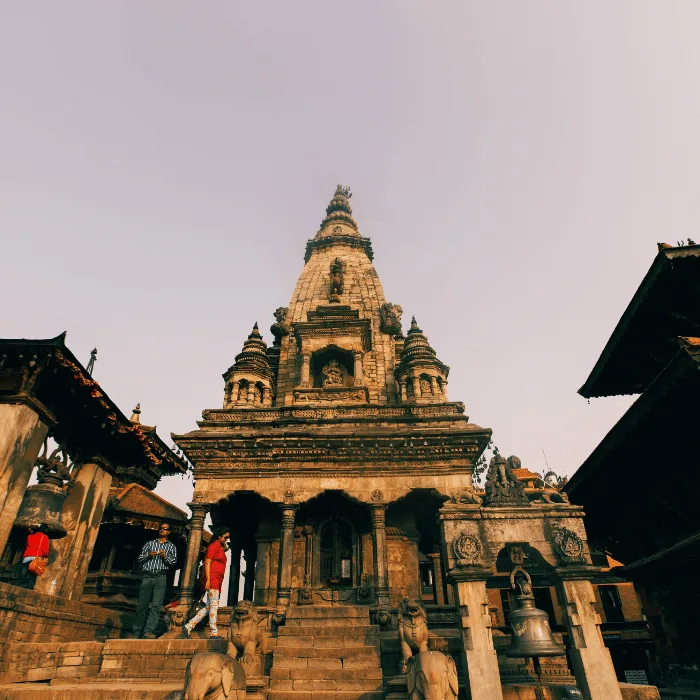
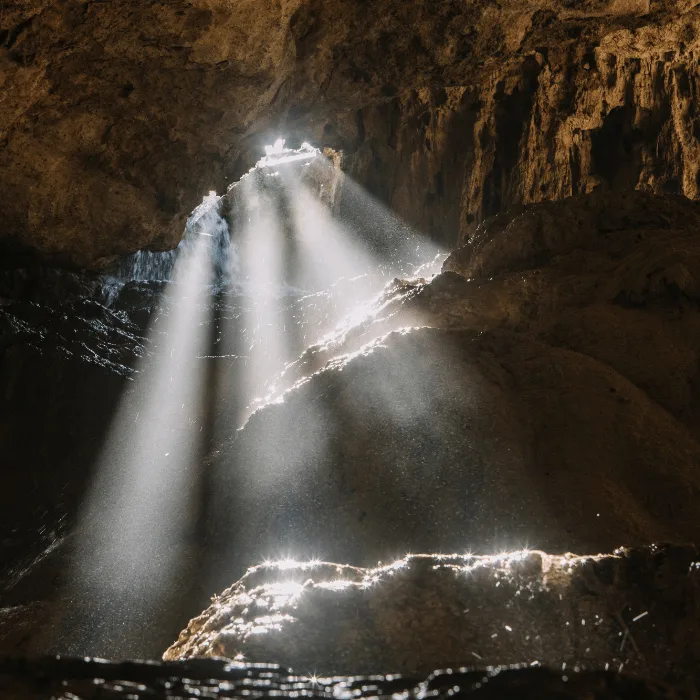
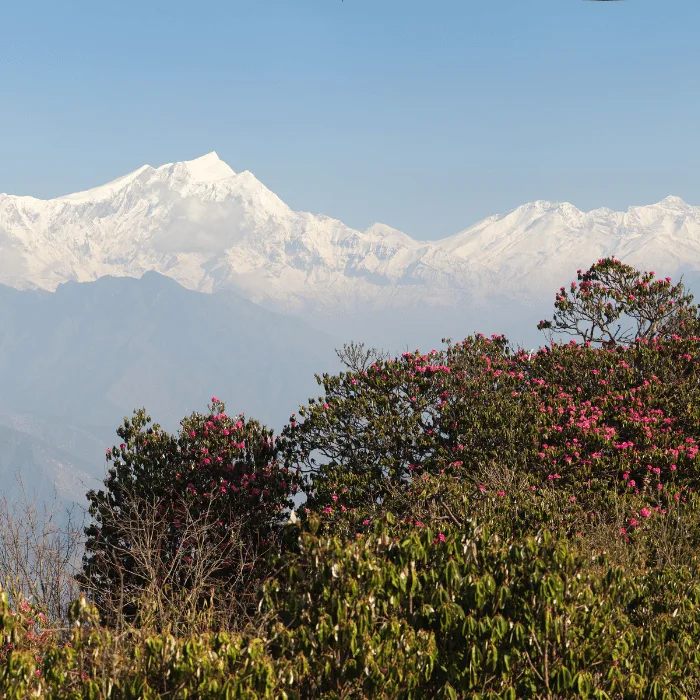
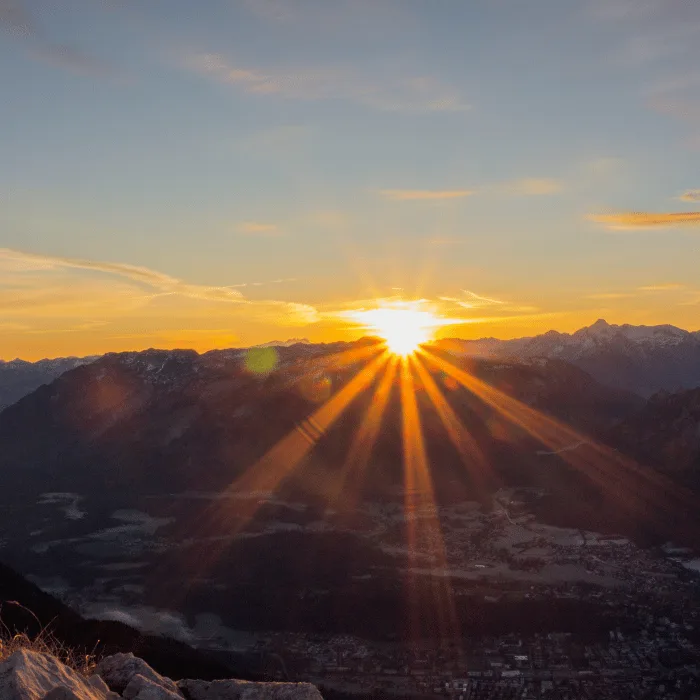
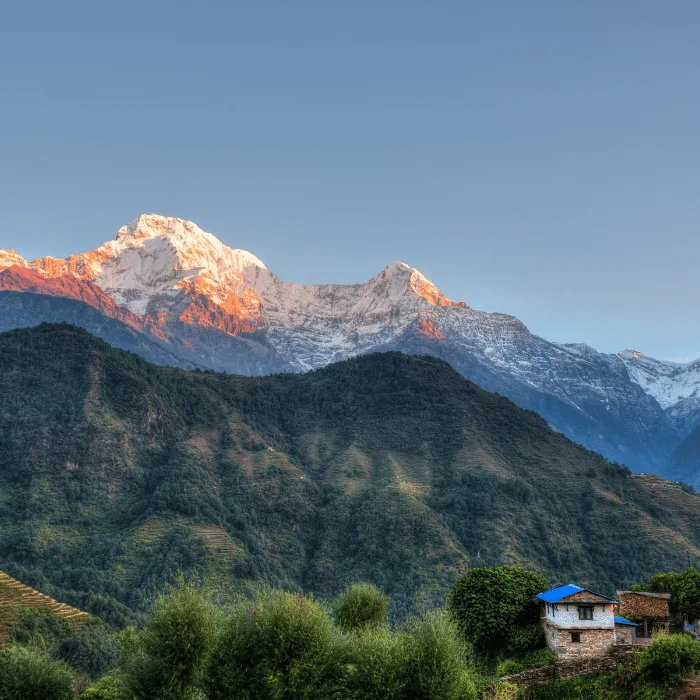


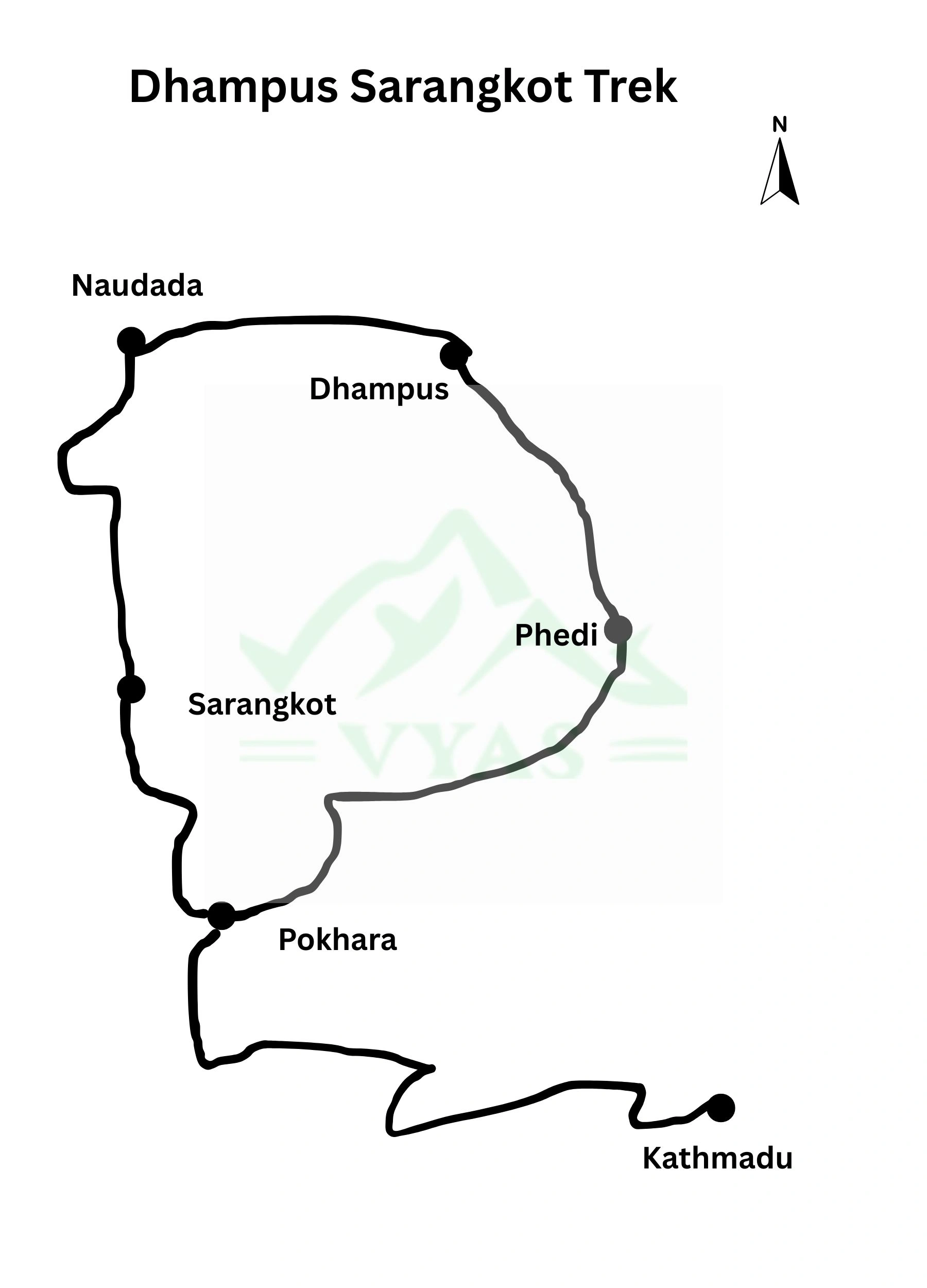






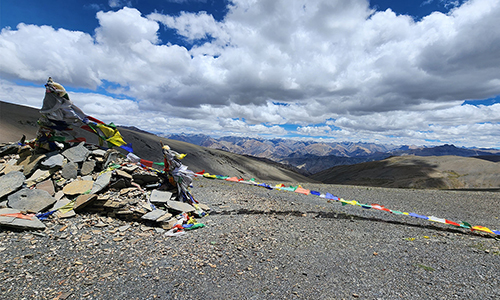

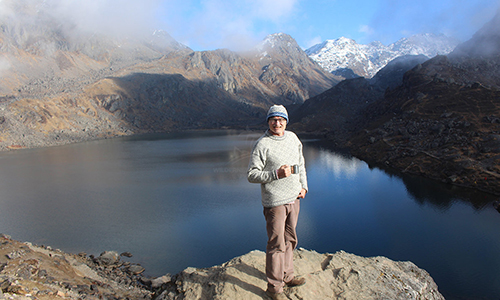


Jessica Morgan
2025-06-16 14:14:51
The Dhampus Sarangkot Trek was a perfect short trek with stunning views of the Annapurna range and peaceful villages. Vyas Trek Nepal organized everything beautifully, and our guide was super friendly and knowledgeable. It was the ideal blend of nature, culture, and light adventure!